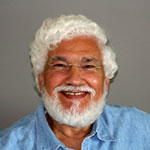January 27, 2013
Post-revolution Egypt: India as a model, Part 2/3
During my recent visit to India I was pleased to learn that Cyberabad is the name appropriately given to the new high-tech area of the historical city of Hyderabad.
The city of Hydrabad, some 600 km southeast of Mumbai on the banks of the Musi River is today India’s fifth largest city with a population of 8 million. Its population doubled in the last 10 years because of Cyberabad (Cyber City) which attracted educated young engineers from all over India. The city is home to more than 1300 IT firms, including Microsoft (operating its largest R&D campus outside the US), Google and IBM. During 2008–09, Hyderabad's IT exports reached US$ 4.7 billion.
Several scientific technical institutes have been set up here including the National Geophysical Institute and the Remote Sensing Agency, making Hyderabad a major science center as well. Many defence research centres are located here and the city is also the seat of the Osmania University and the Central University of Hyderabad.
In 2009 the World Bank Group ranked the city as the second best Indian city for doing business and today the city is the fifth largest contributor to India’s overall GDP.
The emergence of the pharmaceutical and biotechnology industries earned the city the titles of "India's pharmaceutical capital" and the "Genome Valley of India". Although the city in the world of entertainment is not a major competitor to Mumbai’s Bollywood, the Telugu film industry is based here.
The historical city was founded in 1500s by the Mogul but ruled independently by Nizam-al-Mulik, a Mugal viceroy and his descendants starting from the year 1724.
The state of Hyderabad at the time of Nizams was India’s biggest and richest princely state, as large as England and Scotland put together. Today it is divided among the states of Karnataka, Maharashtra, and Andhra Pradesh with the city of Hydrabad as its capital. The former British cantonment of Secunderabad is now its twin city and separated from it by the man-made lake of Hussain Sagar which was built in 1562.
The Nizams used the wealth generated mainly from the emerald and diamond mines to build hospitals, universities and government buildings in addition to palaces and royal grave yards; all constitute today the city of Hydrabad historical buildings and define its fascinating unique Muslim architecture including Charminar at its centre, the Golconda fort, the Qutb Shahi Tombs and Mecca Masjid. Osman Ali Khan, the 7th Nizam, is called the maker of modern Hyderabad because of his patronage of architecture in the city. In 2012, the government of India declared Hyderabad as the first Best heritage city of India.
The city was known as the City of Pearls and until the 18th century the city was the only global trading centre for large diamonds. Industrialisation began under the Nizams in the late 19th century, helped by railway expansion that connected the city with major ports.
The Nizam dynasty was forced to accede to British protection in 1798. In 1903, Berar, then the northernmost section of the state, was transferred to British administration. When India was partitioned in 1947, the Nizams, one of India's most important Muslim princes, wished to remain independent. But the Indian army invaded Hyderabad in 1948. The population, in a plebiscite, endorsed accession to India. Hyderabad became a state in 1950 but was partitioned among neighboring states in 1956. The Nizams were forced to renounce all of their fortune to the Indian government and were removed from power.
Before I left the city I visited the Mecca Masjid, India’s second largest and oldest mosque after that of Delhi, the city’s Muslim area and I had a delicious lunch of Hayderabadi Biryani, but at its very mild version.








